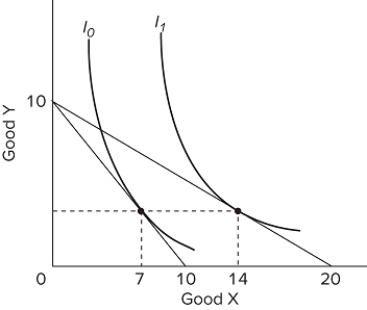Multiple Choice
 Given the indifference curves for an individual as shown above, if the price of good Y = $1, it can be determined that two points on his or her demand curve for good X are
Given the indifference curves for an individual as shown above, if the price of good Y = $1, it can be determined that two points on his or her demand curve for good X are
A) ( Pₓ = $1, Qdₓ = 10) ; ( Pₓ = $2, Qdₓ = 14) .
B) ( Pₓ = $1, Qdₓ = 7) ; ( Pₓ = $0.50, Qdₓ = 14) .
C) ( Pₓ = $0.50, Qdₓ = 7) ; ( Pₓ = $1, Qdₓ = 10) .
D) ( Pₓ = $2, Qdₓ = 20) ; ( Pₓ = $1, Qdₓ = 10) .
Correct Answer:

Verified
Correct Answer:
Verified
Q199: Give a brief description of the law
Q200: The table shows the utility schedule for
Q201: Suppose that football tickets at your university
Q202: "Essential" water is cheaper than "nonessential" diamonds
Q203: A change in the relative prices for
Q205: The diamond-water paradox arises because<br>A)essential goods may
Q206: <img src="https://d2lvgg3v3hfg70.cloudfront.net/TB8602/.jpg" alt=" Which of the
Q207: It is possible for a consumer's indifference
Q208: The law of diminishing marginal utility implies
Q209: In moving northeasterly from the origin, we